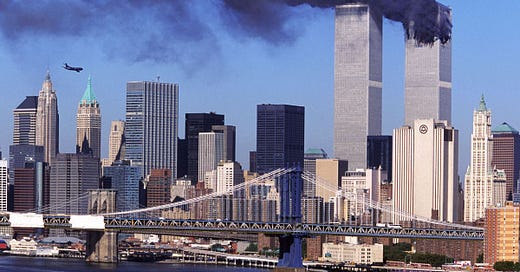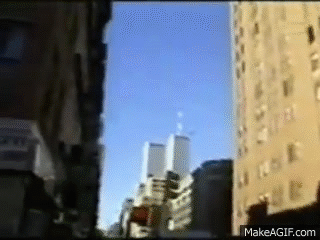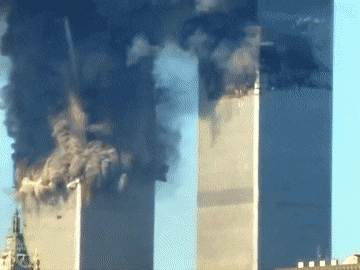For millions of Americans and people watching around the world, September 11, 2001, is a day that will never be forgotten.
Within three hours, New York’s tallest buildings — at the heart of America’s financial markets — were reduced to rubble, and the Pentagon — the nerve center of the American armed forces — was burning and partially collapsed.
Approximately 3,000 people had lost their lives and more than 6,000 were injured. The entire country was in collective shock, still trying to make sense of how a coordinated act of terrorism of that magnitude was allowed to take place on American soil.
The 9/11 attacks were a coordinated hijacking of four commercial airplanes by Al Qaeda terrorists, which were then used to fly into high profile targets in New York City and Washington, DC.
This is a story about what happened during the three hours on that fateful morning when everything changed and how my friend Bill and his investment team were able to save hundreds of millions of dollars of their investors’ capital from significant losses amid the chaos.
The timeline begins in the early morning hours before the first plane involved in the attacks leaves the tarmac just outside of Boston.
September 11, 2001, early morning hours — A group of 19 would-be hijackers made their way through security at airports in Boston, Newark, and Washington, DC.
4:15 a.m., Los Angeles (7:15 a.m., New York) — Bill’s morning alarm sounds off as usual in his oceanside home in Los Angeles. He gets out of bed, showers, dresses, and drives to his hedge fund’s office, which is a 15-minute drive away and directly on the water in Redondo Beach.
(A hedge fund is an investment company that pools investors’ capital and uses sophisticated strategies to earn high returns.)
7:59 a.m., New York — American Airlines Flight 11, a Boeing 767 carrying 81 passengers and 11 crew members, departs from Logan International Airport in Boston, bound for Los Angeles International Airport.
5:01 a.m., Los Angeles (8:01 a.m., New York) — Bill arrives at his office, makes a strong hot cup of Peet’s coffee, opens all the blinds, and sits down at his desk after taking a long look at the beautiful Pacific Ocean amid the brightening dawn.
It’s not a heavy transaction day for the fund. The next 13 minutes came and went without much portfolio activity. The trading room’s TV is tuned in to CNN cable news with the sound muted.
8:14 a.m., New York — United Airlines Flight 175, a Boeing 767, carrying 56 passengers and 9 crew members, departs from Logan International Airport in Boston, bound for Los Angeles International Airport.
8:14 — Flight 11 is hijacked over central Massachusetts. There are five hijackers on board.
8:20 — American Airlines Flight 77, a Boeing 757 with 58 passengers and 6 crew members, departs from Washington Dulles International Airport, bound for Los Angeles International Airport.
Meanwhile, an accidental transmission is received from Flight 11, confirming suspicions that the flight has been hijacked.
8:42 — United Airlines Flight 93, a Boeing 757 with 37 passengers and 7 crew members, departs from Newark International Airport, bound for San Francisco International Airport.
8:42 – 8:46 — Flight 175 is hijacked above northwest New Jersey. There are five hijackers on board.
8:46 — As Americans wake up and commute to work and schools, Flight 11 crashes into the north face of the North Tower (1 WTC) of the World Trade Center, between floors 93 and 99.
All 92 people on board are killed.
(On a typical workday, an estimated 50,000 people work in the World Trade Center complex and another 140,000 pass through as visitors.)
8:49 — The first report of the North Tower crash crosses the Associated Press newswire. Moments later, numerous cable news outlets cover the story.
5:49 a.m., Los Angeles (8:49 a.m., New York) — CNN begins coverage.
Bill’s attention is drawn to CNN’s coverage, which is showing the North Tower on fire. Bill and his team unmute the TV, turn up the volume, and listen to the anchors speculate on whether a small plane may have accidentally crashed into the tower.
It’s a clear day in New York and Bill is finding it hard to believe that the crash is an accident. He remembers that the towers were bombed by terrorists in 1993. After that incident, he started studying and tracking terrorists, including Osama bin Laden and Al Qaeda. One of the things he learned was that terrorists focus on high profile targets. They often attack the same target until it is destroyed. Bill immediately thinks that this is probably another terrorist attack on the World Trade Center, but isn’t certain.
8:50–8:54 — Flight 77 is hijacked above southern Ohio. There are five hijackers on board.
9:03 — As they watch the ongoing coverage, Bill and his team discuss the probability of the North Tower crash being a terrorist attack and the implications on their portfolio when, to their horror (and the world’s), Flight 175 crashes into the south face of the South Tower (2 WTC) of the World Trade Center, between floors 77 and 85.
All 65 people on board are killed.
(The 9/11 terrorist attacks took place in the age of 24-hour cable news coverage and nascent online reporting, which are slow by today’s standards. Nevertheless, because media outlets were able to cover the incident so quickly, millions of people witnessed the second plane striking the South Tower in real-time, a mere 17 minutes after the first impact. This was a defining moment as millions of people around the world experience the events precisely as they unfolded.)
9:05-9:11 — President Bush is about to begin reading The Pet Goat to students when Chief of Staff Andrew Card interrupts him with news of the second plane impact.
Meanwhile, Bill and his team are able to gather their wits and immediately conclude:
These are terrorist attacks and, based on their study, Osama bin Laden is the prime suspect;
The scale and nature of the attacks will fundamentally change everything;
The effect will be a slowdown in trade and economic activity, which will result in the Federal Reserve reducing interest rates;
War is a high probability response, which is bad for risky assets but good for safe-haven assets; and,
They have to act quickly to reduce portfolio risk, and buy safe-haven assets to save their investors’ capital from significant losses.
Because of their positive economic outlook prior to the attacks, Bill’s global macro hedge fund had a long bias with around $250 million in positions.
(A global macro hedge fund attempts to profit from broad market swings caused by political or economic events. A long bias is an investing strategy that takes long positions in stocks and assets that are expected to appreciate in value.)
That outlook completely reversed in the eight minutes since the second impact. Bill and his team quickly jump on the phones and frantically start selling their risky assets. But, time is quickly running out and isn’t in their favor.
9:21 — All bridges and tunnels into Manhattan are closed.
9:28 — Flight 93 is hijacked above northern Ohio. There are four hijackers on board.
Trading on the New York Stock Exchange and the NASDAQ are canceled. The New York Stock Exchange building is being evacuated as well as nearly all banks and financial institutions on Wall Street. Getting people to answer the phones in New York, much less give Bill and his team bids on anything is getting extremely difficult, if not impossible.
(At that time, trades were executed over landline phones. Many financial firms were disabled during the time of the attack, including World Trade Center tenants Bank of America, the Commodity Futures Trading Commission, Lehman Brothers, Morgan Stanley, and Cantor Fitzgerald.)
Bill and his team sell what they could, to whom they could, and buy what they think would be safe-haven assets from whom they could, given their new world view.
Since it is difficult getting anyone to answer the phones in New York amid the chaos, Bill and his team call Deutsche Bank’s London trading desk and buy $35 million of Swiss francs, based on the idea that Swiss francs always do well in chaos.
(The Swiss franc is the sixth most traded currency in the world behind the US dollar, Euro, Japanese yen, British pound, and the Australian dollar. It is well known for its low volatility — one of the reasons it is considered a safe-haven currency. Over the 120 years from 1900 to 2020, most currencies weakened against the US dollar, and only a couple — most notably, the Swiss franc — proved stronger than the US dollar.)
Next, they buy $35 million of 10-year German Bund futures contracts, $25 million of 5-year German Bund futures contracts, and $250 million of 3-month Euro Swiss futures contracts on the London futures exchange. These were bought on the idea that global interest rates will fall and investors will move from risky assets into these safe government bonds, which will cause their prices to rise.
(Interest rate futures are contracts with underlying assets that pay interest. It allows the buyer and seller to lock in the price of the interest-bearing asset for a future date. The price of the future moves inversely to the change in interest rates. If interest rates fall, as Bill and his team expect, the price and value of the future rises.)
9:37 — Flight 77 crashes into the western side of The Pentagon. All 64 people on board are killed.
9:41 — Associated Press photographer Richard Drew takes a picture of a man falling from the North Tower. The man was trapped on the upper floors and, like many others, either fell searching for safety or jumped to escape the fire and smoke.
9:45 — United States airspace is shut down; all operating aircraft are ordered to land at the nearest airport.
As the London futures exchange closes and with New York trading desks disabled, Bill and his team call the Windy City.
The Chicago Mercantile Exchange is fortunately still open. Bill’s friend, Kenny — one of the top futures brokers in Chicago — takes Bill’s call and starts buying Eurodollar futures contracts for Bill’s fund.
(Eurodollars are time deposits denominated in US dollars and held in banks outside of the United States. The price of a Eurodollar future also moves inversely to the change in interest rates. If interest rates fall, as Bill and his team expect, the price and value of the future rises.)
The trading pits are in chaos and Kenny is experiencing great difficulty executing the orders. Nevertheless, Kenny carries on.
9:59 — The South Tower of the World Trade Center collapses, 56 minutes after the impact of Flight 175.
10:03 — Flight 93 is crashed by its hijackers in a field in Somerset County, Pennsylvania. Later reports indicate that passengers had learned about the World Trade Center and Pentagon crashes and were resisting the hijackers. All 44 people on board are killed in the crash.
Kenny in Chicago continues to frantically buy Eurodollar contracts.
10:28 — The North Tower of the World Trade Center collapses, one hour and 42 minutes after the impact of Flight 11. The Marriott Hotel at the base of the two towers is also destroyed, and many of the surrounding buildings are also either damaged or destroyed.
Shortly thereafter, the Chicago futures exchange closes. Chicago was the last and only place in the United States where an investment order could be executed. Kenny was able to buy $350 million of Eurodollar contracts for Bill’s fund, which would increase in value if short term interest rates fall as Bill and his team expect.
10:50 — Five stories of the western side of the Pentagon collapse due to the fire.
10:53 — Defense Secretary Donald Rumsfeld orders the United States military placed at DEFCON 3. Select forces are ready to deploy in 15 minutes.
12:15 — The airspace over the contiguous United States is clear of all commercial and private flights.
Two and a half hours after the first plane left Boston, the iconic “Twin Towers” — the symbols of America’s financial strength — lay in ruins in Lower Manhattan, and brave first responders and military personnel were scrambling to save lives and secure the country.
The terrorist attacks had two immediate consequences: They took an enormous human toll and they created a potentially serious crisis for the economy because of their impact on financial markets.
The immediate effects included the physical disruption of the payments system, a one-week closure of the New York Stock Exchange, and a temporary suspension of air flights within the United States.
Stock prices fell, and the volatility of stocks rose and remained high for several months. Falling asset prices and heightened uncertainty also led banks and other intermediaries to reduce or halt lending.
As Bill and his team expected, the Federal Reserve reacted to the potential economic crisis by providing immediate liquidity to ensure that the payments system continued to function and reduced short term interest rates for some time, to reduce pressure on the financial system and protect economic activity. The Federal Reserve responded quickly and forcefully to the unusual conditions that threatened to affect the real economy.
In the hours and days that followed, gold prices surged, from $215.50 to $287.00 an ounce in London trading. Oil prices also surged. Gas prices in the United States also briefly shot up. Currency trading continued, and, as Bill and his team predicted, the Swiss franc, Euro, British pound, and Japanese yen rose sharply against the US dollar.
Within one and a half hours after Flight 175 crashed into the South Tower, Bill and his team executed over $700 million in trades in response. Their actions saved their investors’ capital from significant losses, and also resulted in gains.
Since that terrible day, a new and shiny 94-story World Trade Center now accentuates the Lower Manhattan skyline, and The Pentagon has been repaired.
But, not all wounds have healed. Like many who continue to live with the absence of nearly 3,000 loved-ones who died during the attacks, Bill, his team, and I will never forget our own respective friends and colleagues whose names are forever engraved in the haunting memorial that now occupies the spaces where the towers once proudly stood.










